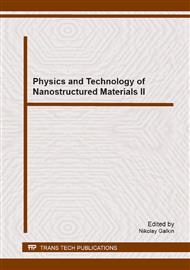p.90
p.96
p.103
p.109
p.114
p.119
p.125
p.131
p.137
Self-Accommodating Nature of Martensite Formation in Shape Memory Alloys
Abstract:
Shape memory effect is a peculiar property exhibited by certain alloy system. This behavior is facilitated by martensitic transformation, and shape memory properties are intimately related to the microstructures of alloys; in particular, the morphology and orientation relationship between the various martensite variants. Martensitic transformation occurs in thermal manner, on cooling the materials from high temperature parent phase region. Thermal induced martensite called self-accommodated martensite or multivariant martensite occurs as multivariant martensite in self-accommodating manner and consists of lattice twins. Shape memory alloys are deformed in low temperature martensitic phase condition, and deformation proceeds through a martensite variant reorientation. Copper based alloys exhibit this property in metastable β - phase region.
Info:
Periodical:
Pages:
114-118
Citation:
Online since:
March 2014
Authors:
Price:
Сopyright:
© 2014 Trans Tech Publications Ltd. All Rights Reserved
Share:
Citation:


